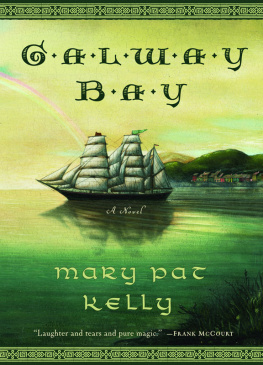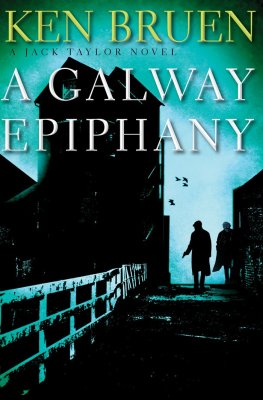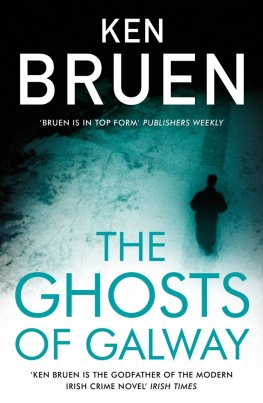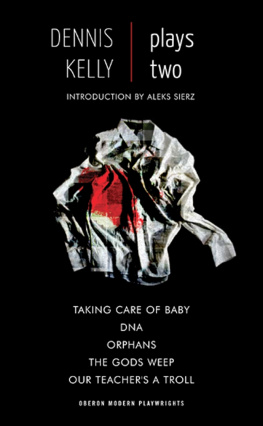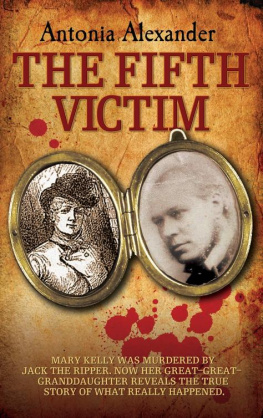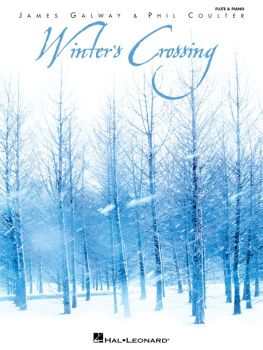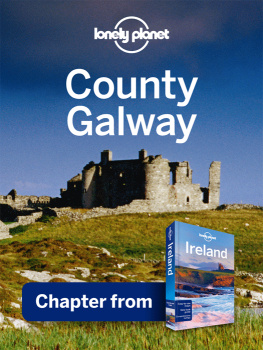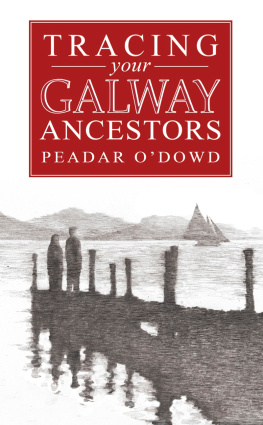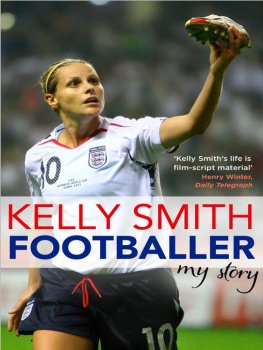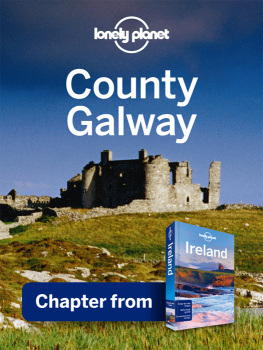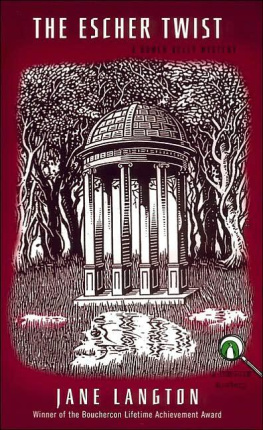Mary Pat Kelly - Galway Bay
Here you can read online Mary Pat Kelly - Galway Bay full text of the book (entire story) in english for free. Download pdf and epub, get meaning, cover and reviews about this ebook. year: 2009, publisher: Grand Central Publishing, genre: Art. Description of the work, (preface) as well as reviews are available. Best literature library LitArk.com created for fans of good reading and offers a wide selection of genres:
Romance novel
Science fiction
Adventure
Detective
Science
History
Home and family
Prose
Art
Politics
Computer
Non-fiction
Religion
Business
Children
Humor
Choose a favorite category and find really read worthwhile books. Enjoy immersion in the world of imagination, feel the emotions of the characters or learn something new for yourself, make an fascinating discovery.
- Book:Galway Bay
- Author:
- Publisher:Grand Central Publishing
- Genre:
- Year:2009
- Rating:4 / 5
- Favourites:Add to favourites
- Your mark:
- 80
- 1
- 2
- 3
- 4
- 5
Galway Bay: summary, description and annotation
We offer to read an annotation, description, summary or preface (depends on what the author of the book "Galway Bay" wrote himself). If you haven't found the necessary information about the book — write in the comments, we will try to find it.
Galway Bay — read online for free the complete book (whole text) full work
Below is the text of the book, divided by pages. System saving the place of the last page read, allows you to conveniently read the book "Galway Bay" online for free, without having to search again every time where you left off. Put a bookmark, and you can go to the page where you finished reading at any time.
Font size:
Interval:
Bookmark:
The process of writing Galway Bay really began in 1969, my first time in Ireland. When I think of all the people I met on my subsequent trips who said, Welcome home, to me, I want to thank every single person. I wish I could name each one of you. Thank you.
I do want to express special gratitude to my own family: my father, Michael Joseph Kelly; my mother, Mariann Williams Kelly; my brother, Michael; my sisters, Randy, Mickey, Susie, and Nancy; and family members Martha Hall Kelly, Ernest Strapazon, Ed Panian, and Bruce Jarchow. Each made unique contributions to this book, as did my nieces and nephews. My great-niece Aidan and great-nephew Edward have begun Honoras seventh generation, an occasion for thanksgiving.
Im grateful to my aunts and uncles and all my cousins, branches of the same tree, and express particular gratitude to Sister Mary Erigina, BVM, Agnella Kelly, who introduced me to Honora.
In Galway, Ireland, my research benefited greatly from Mary Qualter of the Galway County Library, who helped me solve many mysteries and introduced me to excellent local histories, especially the works on Bearna by Padraig Faherty and artist Geraldine Folan, who captures Galway Bay and the lost fishing hamlet of Freeport in her paintings.
Siobhan McGuinness and Jean Gormley of the Galway History Center were very helpful to me, and I thank them. Im grateful to Sister Mire Mac Niallais, who located both Askeeboy and Eugene Mulloy of Nashville, connecting neighbors separated for a hundred and sixty years.
I want to thank the National University of Ireland, Galway, and the University of Ulster at Derry as well as the Royal Irish Academy and the National Library of Ireland for giving me access to their collections.
I very much appreciate the chance to use the resources of Delargy Centre for Irish Folklore and the National Folklore Collection, University College Dublin, Ireland, and thank Emer NiCheallaigh and Jonny Dillon. Jonny translated the Irish material and kept me right on my own references to the language.
I learned much in visiting various heritage centers, especially those at Castle Blakeney and the Ulster American Folk Park.
Im grateful to John and Pat Hume, Daithi and Antoinette OCeallaigh, Patsy OKane and all at Beech Hill House Hotel; Sharon Quinn, Roisin Nevin, Mary Mullan, and the staff of Ballynahinch House; Maeve Kelly, Gerard Kelly-OBrien, Padraig Keeley, and the other families of Carna; and taxi drivers beyond counting.
I wish to thank my friends in Dublin: Mary Sheerin, Mary Maher, Mary Cummins, Maeve Binchy, Sharon Plunkett, and Philip Nolan.
In Chicago, I thank the skilled and generous research staff of the Chicago History Museum, the librarians at the Newberry Library, and the Harold Washington Branch of the Chicago Public Library. Bonnie Rowan guided me at the Library of Congress and the National Archives in Washington, D.C. Thank you.
Im grateful to my own CUNY Graduate Center Library. Quin-nipiac Universitys Great Hunger Room, The Lender Family Special Collection of the Arnold Bernhard Library, receives my thanks and my admiration for their unique contribution in bringing together a rich archive and ensuring that the Great Starvation will not be forgotten. This includes the wonderful bronze statue Irish Mother and Child by sculptor Glenna Goodacre, who did the Vietnam Nurses Memorial. In this figure the artist captures the determination and resilience of the Irish women who saved us. (The statue also resembles in a startling way my sister Susie, both in spirit and appearance.) Good- acre also uses Irish Mother and Child as one of the thirty-five life-size figures that depict the Great Starvation and the Journey to America in the powerful Irish Memorial in Philadelphia. Thank you to the government of Canada for the Grosse sle Irish Memorial National Historic Site. I was also touched and inspired by the New York Irish Hunger Memorial in Battery Park City. To stand by the authentic nineteenth-century cottage on a hillside covered with native Irish plants is an emotional experience. I thank artist Brian Tollo, and former governor George Pataki (his mother, Margaret, whose mother was born in Ireland, was on the executive committee). I would like to thank historian Maureen ORourke Murphy, PhD, who has raised awareness of the Great Starvation through this memorial, her work in developing a curriculum for the New York State schools, and her own scholarship and her leadership in the American Conference for Irish Studies. I am grateful, too, for the encouragement shes given me. Many collections of letters, documents, diaries, and newspapers, as well as books on a whole range of subjects, enriched Galway Bay. Ive listed some of them on MaryPatKelly.com.
In the last few years, studies of the Great Starvation have multiplied. I have found Cormac OGradas work especially helpful, as well as Thomas Keneallys The Great Shame, and I kept coming back to The Great Hunger by Cecil Woodham Smith.
I want to thank my teachers, professors Sam Levin and Marvin Magdalaner of the CUNY Graduate Center; John Kelly of the Parlour, the Kelly Gang, and Roberta Aria Sorvino, Mary Anne Kelly DeFuccio, Monique and Danielle Inzinna, Bruce and Carole Hart, Mary Bringle, Laura Aversano, and Maria Frisa. Im grateful to Bill Pindar and all at the Stony Point Center. Thanks to Meredith Meagher and Betty Martinez.
Thank you very much to the outstanding team at Grand Central Publishing, Hachette Book Group. Im very proud that Maureen Egen, so revered in publishing during her tenure at Warner Books, made Galway Bay possible. Thank you for that, Maureen, and for giving me editor Frances Jalet-Miller. Her intelligence, sensitivity, and honesty contributed greatly to this book. I appreciate the encouragement I received from Jamie Raab, executive vice president of Hachette Book Group and publisher of Grand Central Publishing. Thank you to senior editor Karen Kosztolnyik for championing Galway Bay. At Hachette Book Group Im also grateful to executive managing editor Harvey-Jane Kowal and to copy editor Sona Vogel for taming the hefty manuscript, to the art department for the beautiful cover, and to senior publicist Elly Weisenberg Kelly for her enthusiasm.
And then theres Kathy Danzer. Her incomparable computer skills transformed hundreds of legal pads into a manuscript. I thank her, as my first reader, for her judgment, kindness, and rock hard belief in the process. Because shes a woman of the theater, she insisted that the show must go on. We had to be ready for opening night. And we were.
Im grateful to Barbara Leahy Sutton, the friend of a lifetime and a distinguished editor of the Chicago Tribune. She guided me personally and professionally.
Thank you, Martin Sheerin, my husband and most precious connection to Ireland, for letting me read to you when I got stuck. You always know how to help me out.
OTHER BOOKS BY MARY PAT KELLY
FICTION
Special Intentions
NONFICTION
Martin Scorsese: The First Decade
Martin Scorsese: A Journey
Home Away from Home: The Yanks in Ireland
Proudly We Served: The Men of the USS Mason
Good to Go: The Rescue of Scott OGrady from Bosnia
Galway Bay, though fiction, is rooted in research done over a period of thirty-five years in Ireland and the United States. The novel draws on family history, especially the memories of Honora Kelly, that my cousin Agnella Kelly, Sister Mary Erigina, who lived to be 107, shared with me. Honora was her great-grandmother, my great-great-grandmother. The two million who escaped the Great Starvation became forty-four millioncompletely American, but always Irish. Galway Bay is meant to echo their story, as well as the stories of all other groups who, forced to leave their homes, turn the tragedy of exile into triumph by simply surviving.
Next pageFont size:
Interval:
Bookmark:
Similar books «Galway Bay»
Look at similar books to Galway Bay. We have selected literature similar in name and meaning in the hope of providing readers with more options to find new, interesting, not yet read works.
Discussion, reviews of the book Galway Bay and just readers' own opinions. Leave your comments, write what you think about the work, its meaning or the main characters. Specify what exactly you liked and what you didn't like, and why you think so.

